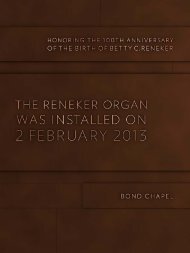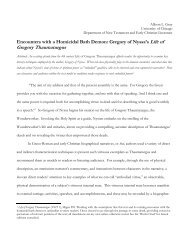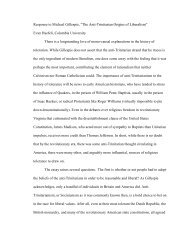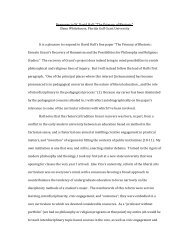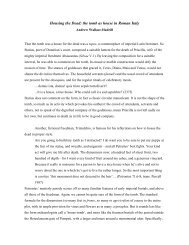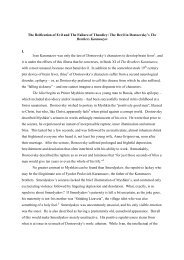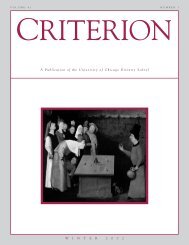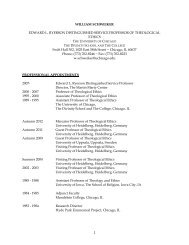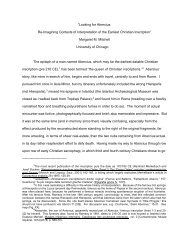THE ALTAR AND THE SCREEN: FILMMAKING AND WORLDMAKING S. Brent ...
THE ALTAR AND THE SCREEN: FILMMAKING AND WORLDMAKING S. Brent ...
THE ALTAR AND THE SCREEN: FILMMAKING AND WORLDMAKING S. Brent ...
Create successful ePaper yourself
Turn your PDF publications into a flip-book with our unique Google optimized e-Paper software.
My approach then is about the connection of the world “out there,” and the re-<br />
created world on screen and at the altar, and how these worlds mutually impact one<br />
another. The impact, furthermore, is often so great that participants do not see differences<br />
in the worlds but rather view them as a seamless whole. Religious worlds are so<br />
encompassing that devotees cannot understand their personal worlds any other way;<br />
filmic worlds are so influential that personal relationships can only be seen through what<br />
has been seen on screen. My hypothesis is that by paying attention to the ways films are<br />
constructed, we can shed light on the ways religions are constructed, and vice versa. Film<br />
production borrows millennia-old aesthetic tactics from religions—at the dawn of the<br />
twentieth century filmmakers were more self-conscious about this then they are at the<br />
start of the twenty-first century—but contemporary religious practices are likewise<br />
modified by the pervasive influence film has had on modern society.<br />
To create this relationship, I play the role of editor, or perhaps of bricoleur,<br />
juxtaposing film theory and religious theory in order to highlight the ways both religion<br />
and film are engaged in the practice of worldmaking. As intimated by avant-garde<br />
filmmaker Maya Deren in the epigraph above, invention and creation do not operate by<br />
bringing something into being “out of nothing” (a troubling myth of creativity<br />
perpetuated by Christian theology and a romantic view of the modern artist alike), but of<br />
taking what is already known and creating a new relationship. There is nothing new<br />
under the sun, but there are new relationships between old substances. Along these lines,<br />
I adopt the language of the great Soviet filmmaker Sergei Eisenstein, who once wrote of<br />
the social value of “intellectual montage,” in which new and revolutionary ideas might<br />
spring from the juxtaposition of previously separate images. And to be interdisciplinary<br />
4



